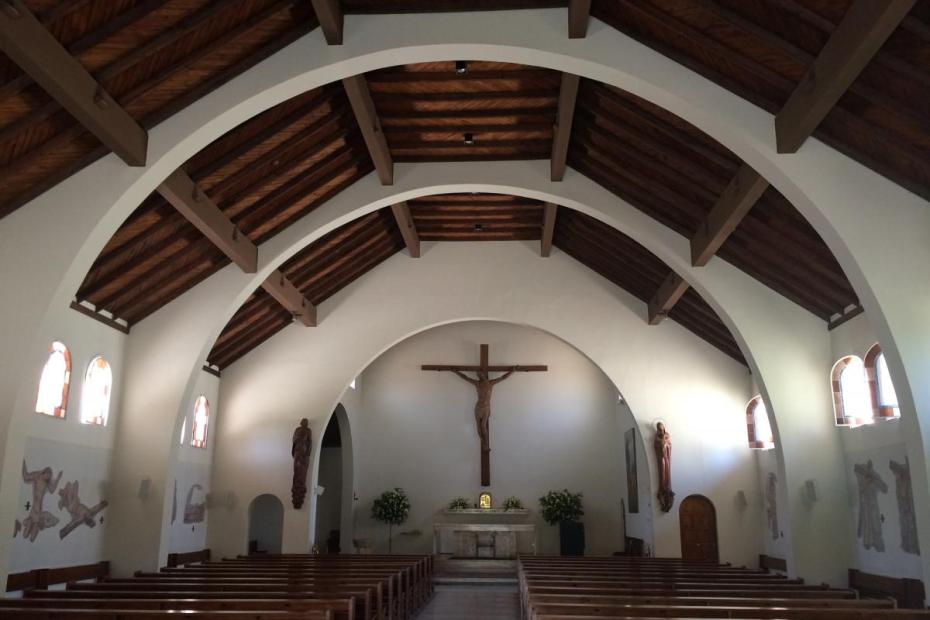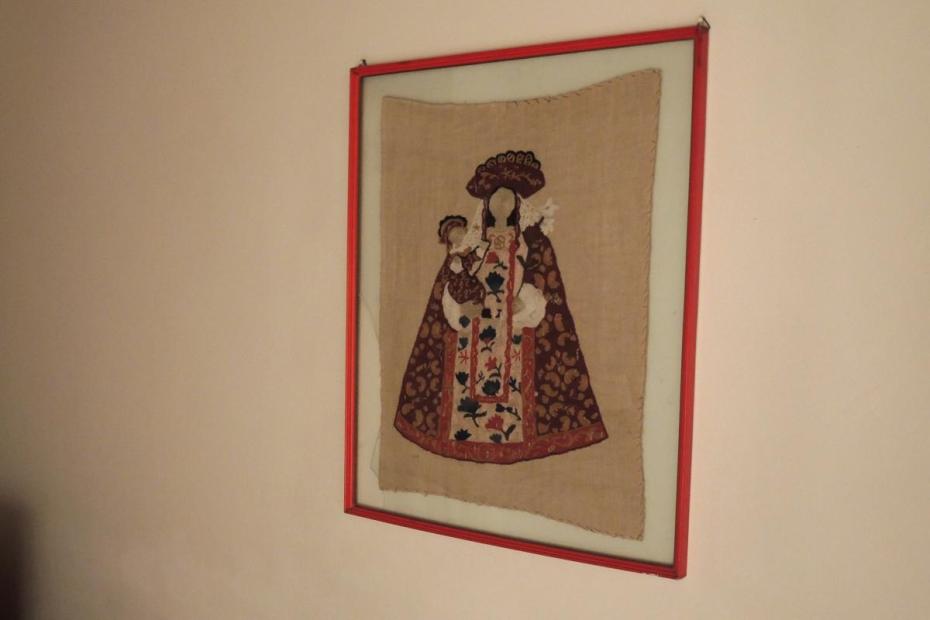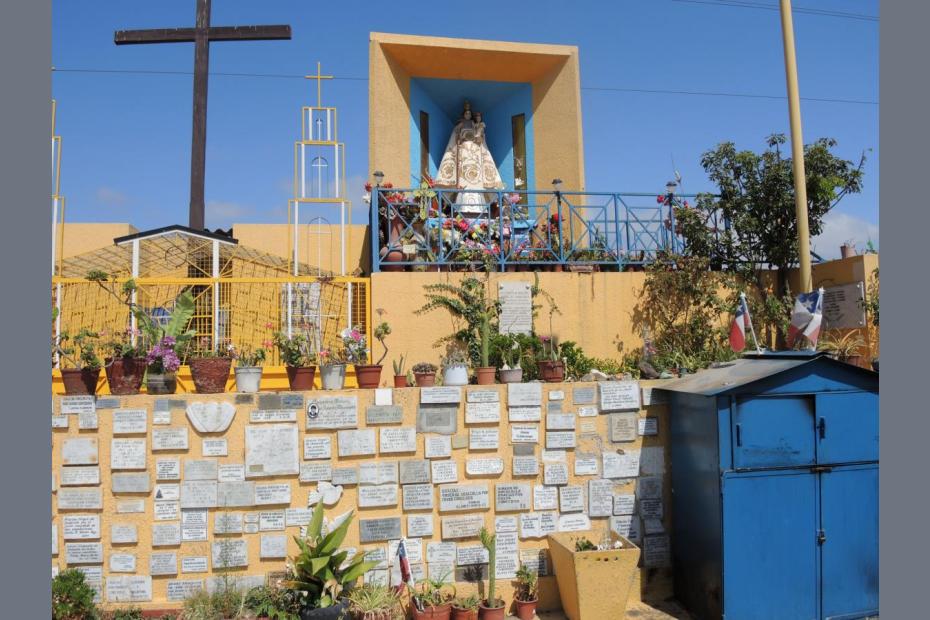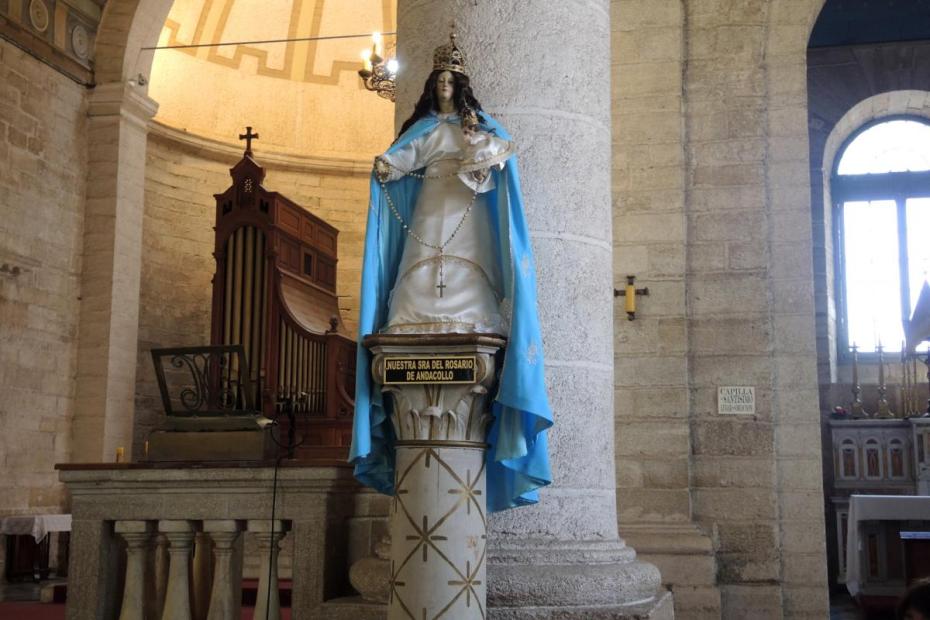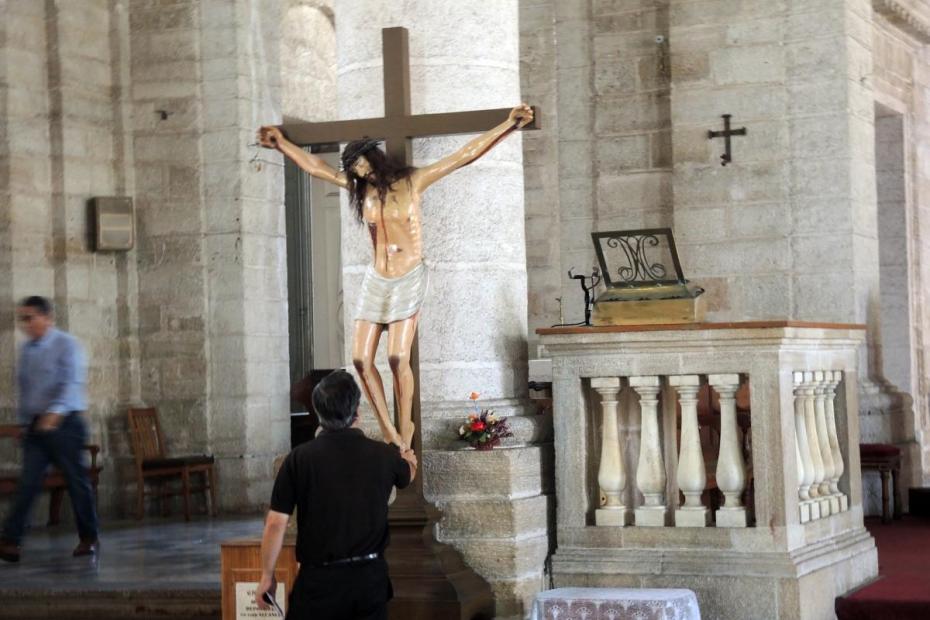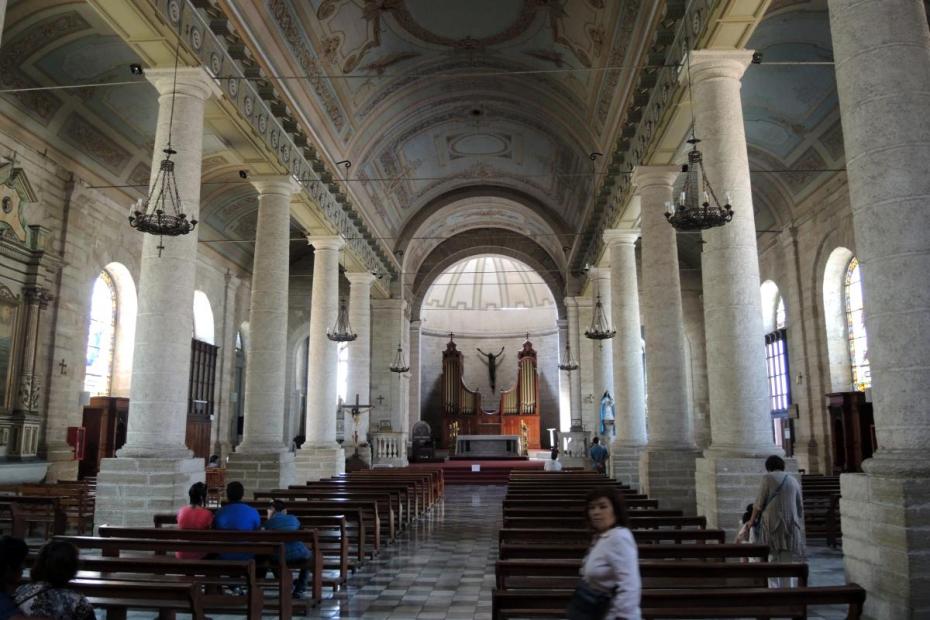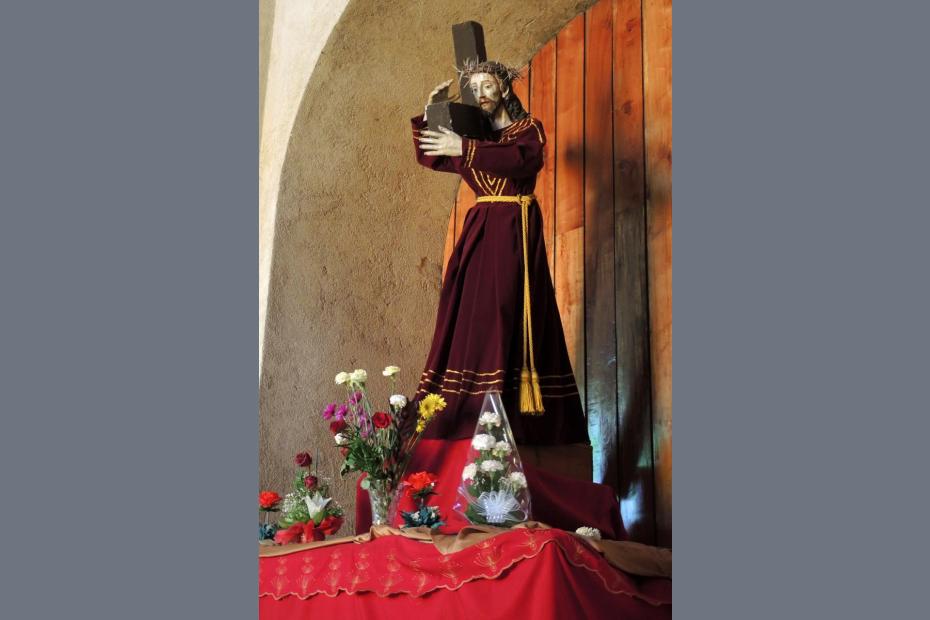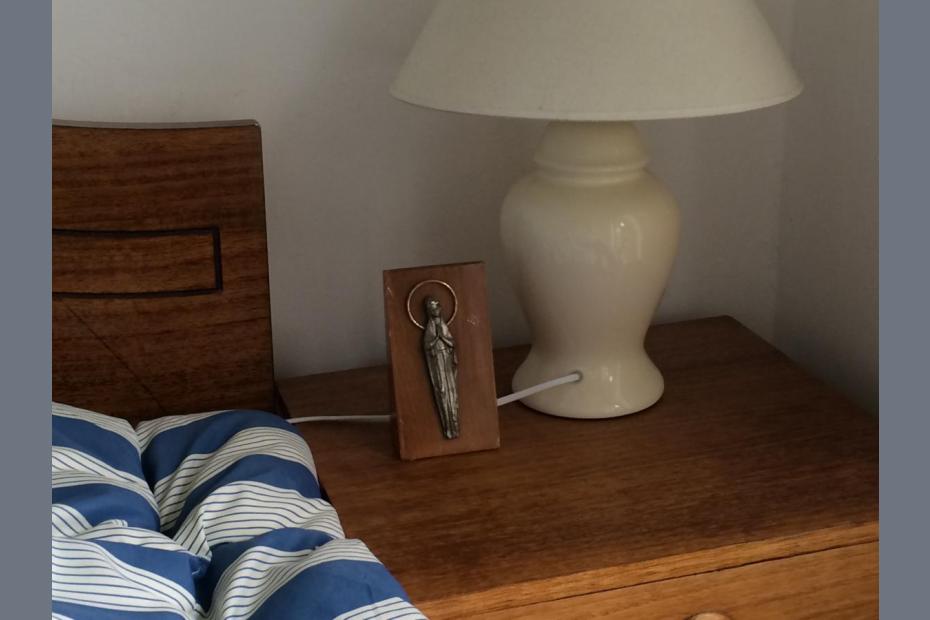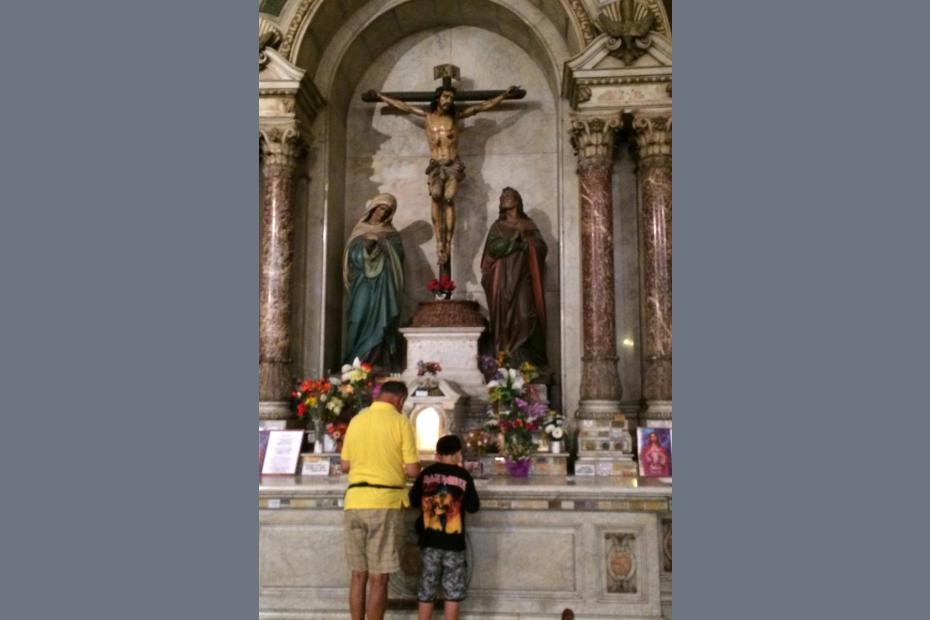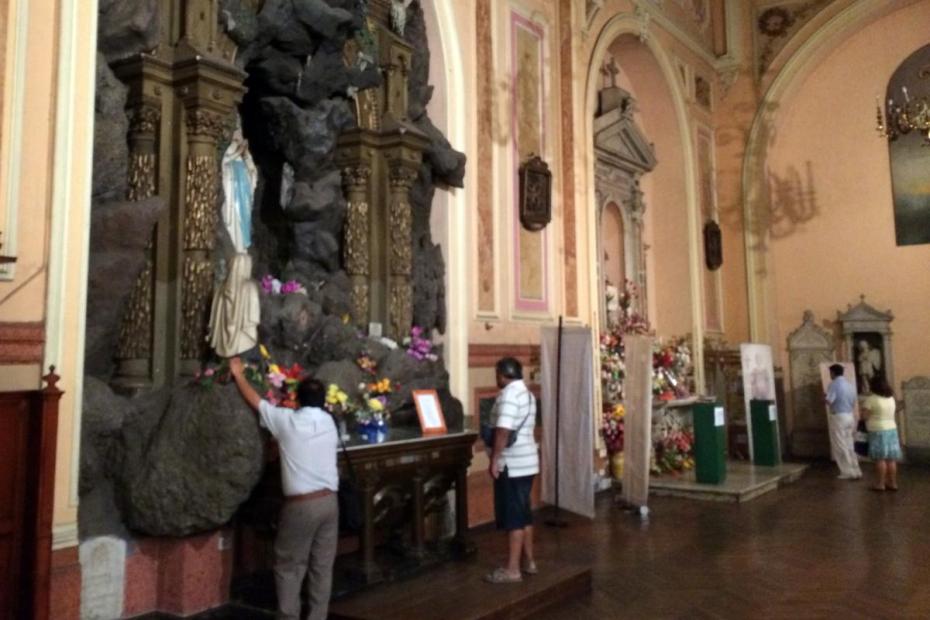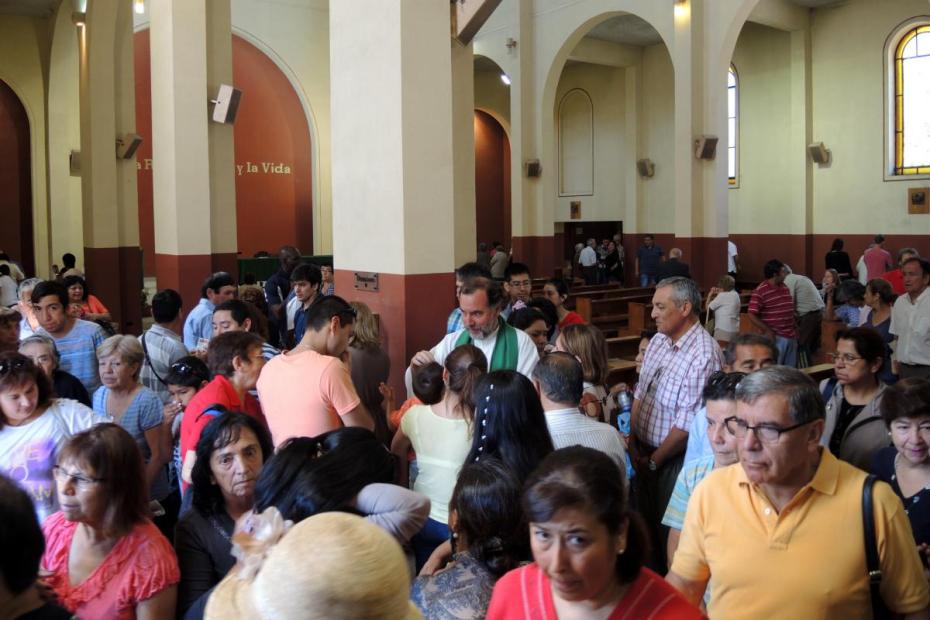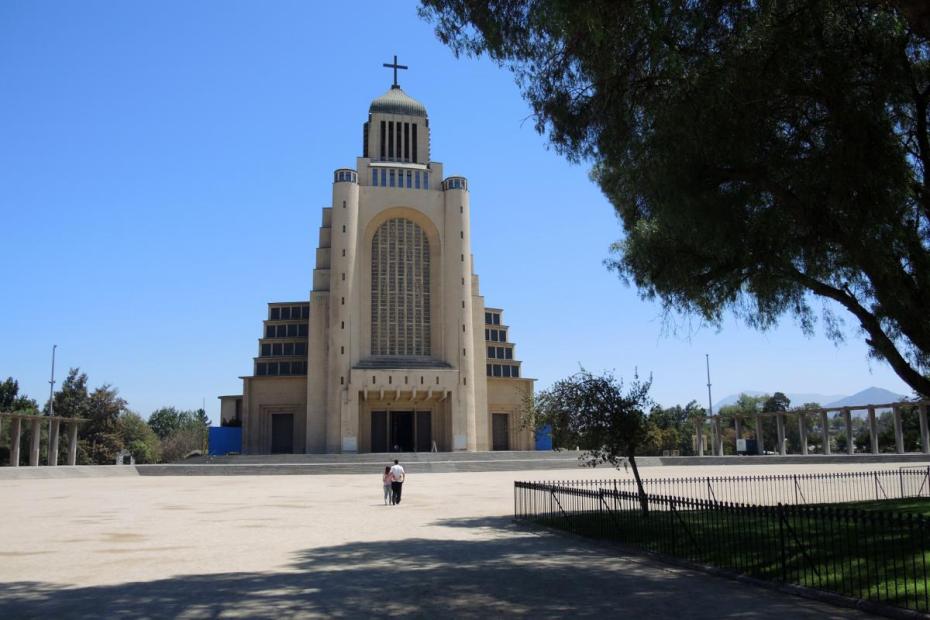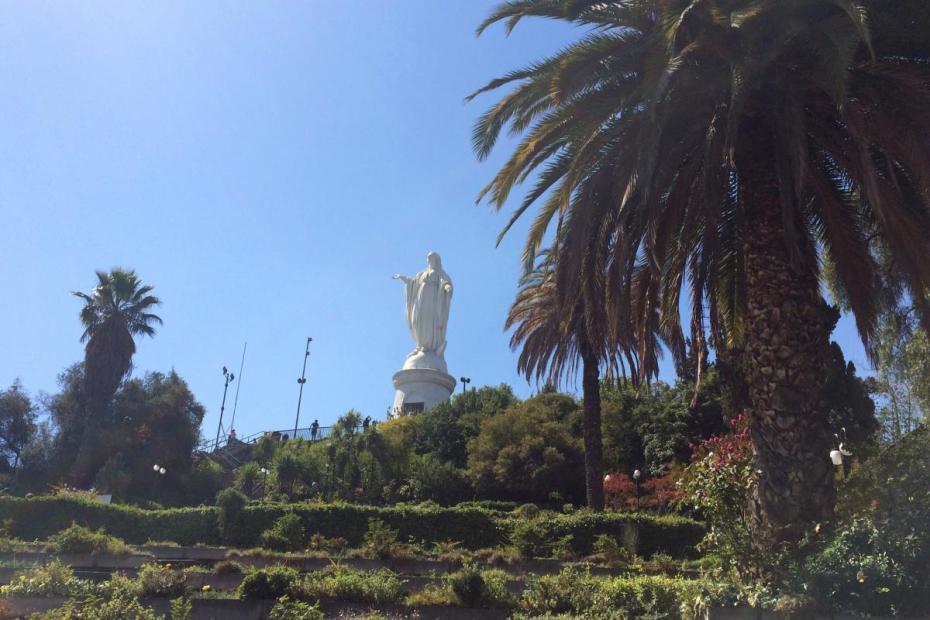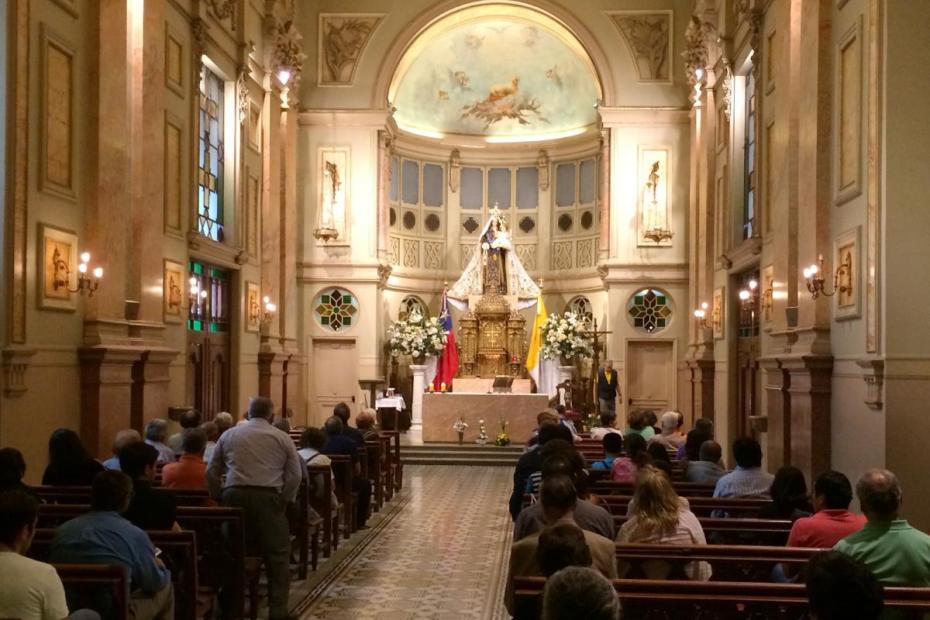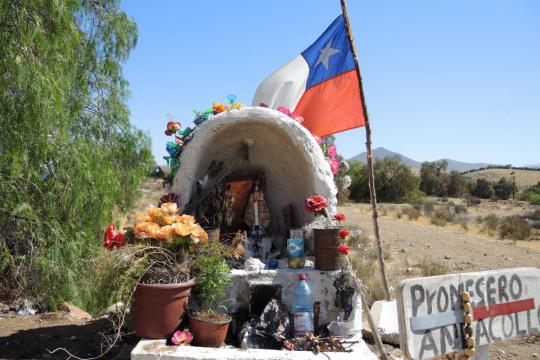Visually, the Chilean cultural landscape is full of conflicting signals about the place of Catholicism today. On the one hand, a visitor occasionally comes across large, well-tended shrines to the Virgin or to a saint or to Jesus’ crucifixion, or crosses or Marian statues on top of hills, and one can find a church in every neighborhood or town, though the exteriors of these are often fairly understated. Almost without exception, the public religious images one does see are Catholic. Oftentimes it is hard to tell whether many of these visual manifestations are more historical legacy than lived religion. Streets and subways stops are named after saints but most of those are older phenomena. Still, some are fairly recently named, e.g. after the canonization of Chilean native Alberto Hurtado. In 2000, the country issued a new 500 peso coin bearing the image of a beloved Chilean cardinal, Raúl Silva Henríquez, who died the previous year.
On the other hand, one might walk for a long time in a crowd, or travel a great distance by car without seeing any visible religious images. Chileans rarely wear crosses or religious medals. Chileans almost never display Christian symbols outside their houses. Almost never does one see religious (or secular) decals or stickers on car bumpers or windows. Inside cars, though, religious symbols like rosaries hang in perhaps 20 percent of cars. And shrines do sell rosaries, holy cards and small religious trinkets. Once in a while, one sees a religious statue in a store, or holy cards for sale there, but these are not typical. Animitas are, in many parts of the country, the most consistent form of religious imagery.
The visual style of Chilean Catholic churches varies widely, including a small number of colonial churches that survive, many 19th-century confections with numerous shrines whose candles and flowers mark them as active places of devotion, and more contemporary churches – both in rich and poor neighborhoods — whose design leaves no place for such devotionalism. Gothic styles are rare, and 20th-century churches only occasionally imitate a Spanish colonial revival style.
